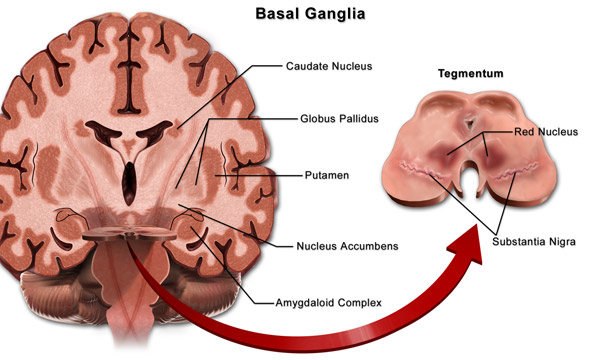basal ganglia

Basal ganglia are paired nerve cell clusters in the brain, deep within the cerebrum and upper part of the brainstem. The basal ganglia play a vital role in producing smooth, continuous muscular actions and in stopping and starting movement. Specifically, they are involved in:
Anatomy of the basal ganglia
The basal ganglia consist of the striatum, the globus pallidus, and the subthalamic nucleus. The striatum is the target of cortical input to the basal ganglia and can be divided into the caudate nucleus and the putamen. The globus pallidus is the source of output to the thalamus and can be divided into an internal and external segment. The substantia nigra is a midbrain structure that is reciprocally connected with the basal ganglia of the forebrain. Disease or degeneration of the basal ganglia and their connections may lead to the appearance of involuntary movements, trembling, and weakness, as occur in Parkinson's disease.
Source: Bear, M. F., Connors, B.W. & Paradiso M. A., Neuroscience: Exploring the Brain, Second Edition, Baltimore, MD: Lippincott Williams & Wilkins, 2001, pop 473-482.


